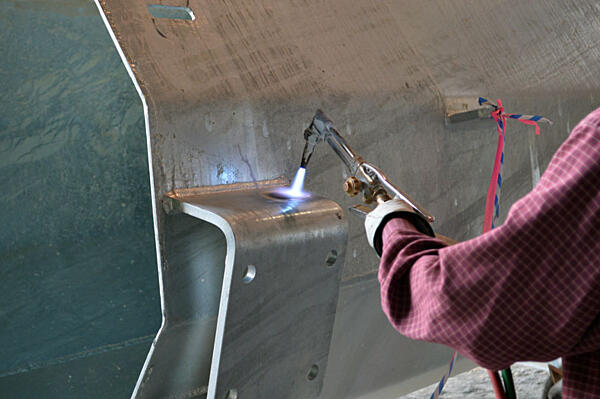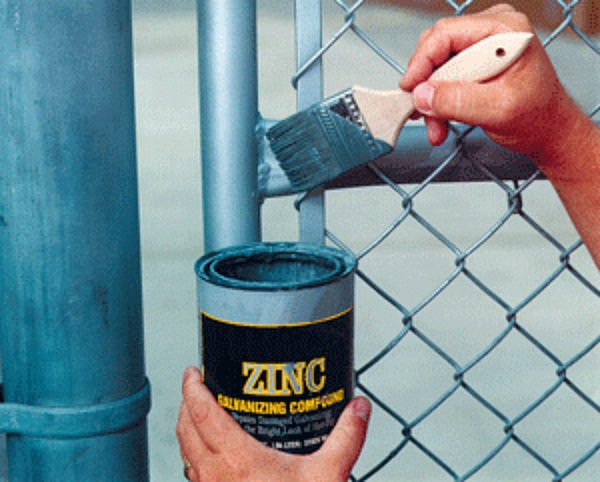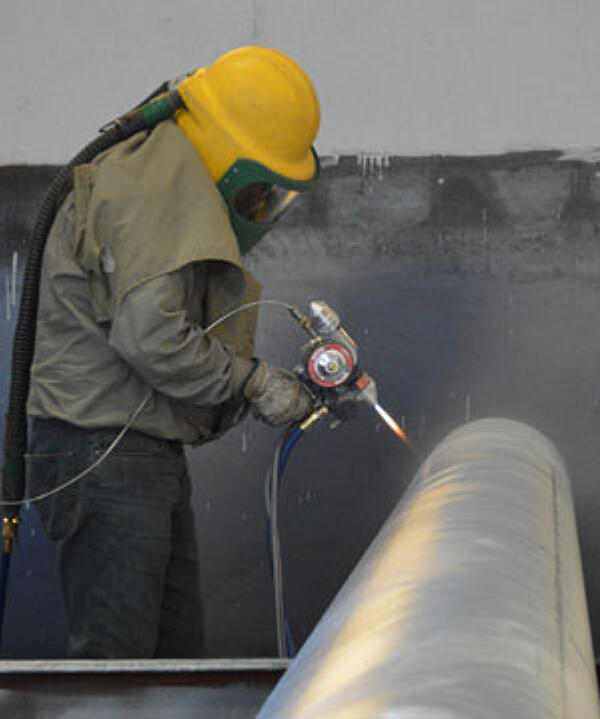Touch-Up & Repair
The touch-up and repair of hot-dip galvanized steel coatings is important to maintain uniform barrier and cathodic protection as well as ensure longevity. Although the hot-dip galvanized coating is very resistant to damage, small voids or defects in the coating can occur due to improper handling of the steel after galvanizing or from normal wear and tear.
The AGA has an online video series for Touch-Up and Repair of Hot-Dip Galvanized Steel. Six short videos detail the many aspects to consider when touching up or repairing HDG steel.

In Plant
Unlike repair in the field, there are size limitation when performing repair in the plant. The specification to follow for touch-up and repair of hot-dip galvanized steel in plant is ASTM A123, which allow for 1 inch in the narrowest dimension, and the total area of repair is no more than 1/2 of 1% of accessible area or 36in2, whichever is less. ASTM A153, which states no more than 1% of the surface area can be repaired, excluding threads. Finally, the specification ASTM A767, which states the total area in any 1 foot lenth shall not exceed 1%.

In Field
When it comes to repairing galvanized steel in the field, there is no limitation to the size that can be repaired. The zinc coating is difficult to damage, and field fabrication that requires removal of the coating should be minimized as much as possible. As noted before, the cathodic protection of the coating will provide some protection to uncoated areas, but the best practice for longevity is to touch-up any bare areas.
There is no size limitation for areas that need to be repaired in the field and repair can be performed after the initial construction if there is damage during construction or handling, or it can be performed after years of service. The specification to follow for touch-up and repair of hot-dip galvanized steel is ASTM A780, Practice for Repair of Damaged and Uncoated Areas of Hot-Dip Galvanized Coatings. This specification details how to use the three acceptable methods of touch-up as well as the required coating thickness for the repaired area.

Accepted Touch-Up Methods
Zinc-Based Solders
Soldering with zinc-based alloys is achieved by applying zinc alloy in either a stick or powder form. The area being repaired needs to be preheated to approximately 600F (315C). The acceptable material compositions of solders used for repair are included in the specification. The final coating thickness for this repair must meet the specification requirement for the material category of the steel part being repaired with a maximum thickness of 4 mils (100 µm). The thickness should be measured by any of the methods in A123/A123M that are non-destructive. Zinc-based solder products closely match the surrounding zinc and blend in well with the existing coating appearance.

Zinc-Rich Paints
Applying zinc-rich paints as a touch-up and repair material requires a clean, dry steel surface and can be applied by using either a brush or spray. Zinc-rich paints should contain either between 65% to 69% metallic zinc by weight or greater than 92% metallic zinc by weight in dry film. Paints containing zinc dust are classified as organic or inorganic, depending on the binder they contain. Inorganic binders are particularly suitable for paints applied in touch-up applications of undamaged hot-dip galvanized areas. The coating thickness for the paint must be 50% more than the surrounding coating thickness, but not greater than 4.0 mils (100µm).

Zinc Spray (Metallizing)
Zinc spray, or metallizing, is done by melting zinc powder or zinc wire in a flame or electric arc and projecting the molten zinc droplets by air or gas onto the surface to be coated. The zinc used is nominally 99.5% pure or better. The renovated area must have a zinc coating thickness at least as thick as that required in ASTM A123/A123M for the material category